
A short-term cure may be, but there is nothing quite like a bit of intensive retail therapy to put the fizz when buying a gift. Most of Kenya’s retail structures are called curio shops, with organized, desirable, affordable features and a variety of uniquely different gifts.
Perhaps the best buys are found amongst the handcrafts haul: multi-colored Masai beadwork belts, bright sisal baskets, the ever-popular cotton wraps for men and women commonly referred to as the Kikoys and Khangas (which do just everything from interior design to high fashion), evocative carvings from elephants to antelopes, soft carved soapstone’s such as malachite, rose quartz and Tanzanite, lots of ‘big’ jewelry wrought from everything; from banana leaves to cow horn- really high on impact and ridiculously low on expenditure and sandals from jewel-beaded to cow-horn-thonged.


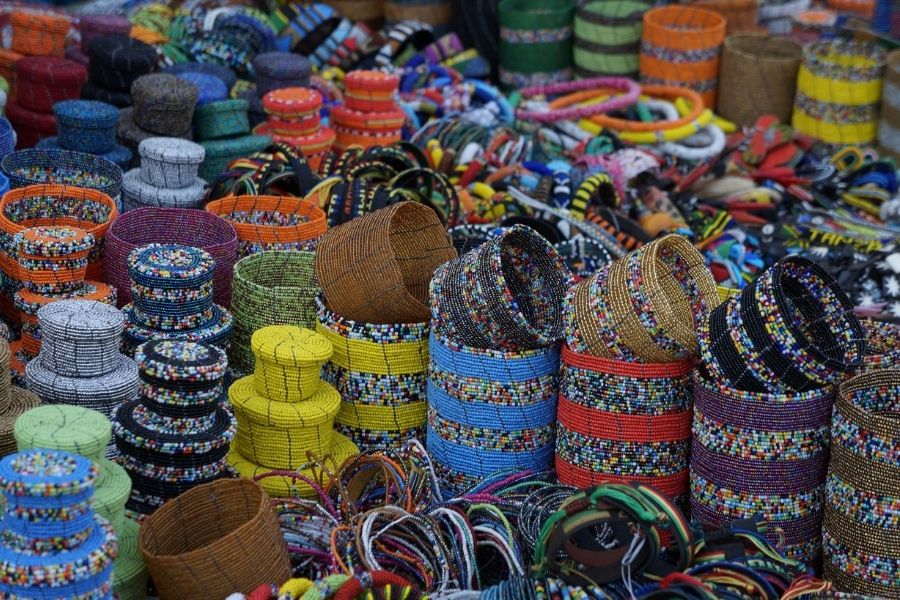
Kenya has also taken a new direction concerning the so-called beach boys who used to peddle their wares on the beaches. This is no longer happening because they have been housed in purpose-built handicraft centers welcoming visitors.
Here, you can see the items being made and get to choose from the long list of fantastic dragon’s horde of glittering sarongs, tinkling jewelry, gleaming carvings, and Abstract paintings.
Kenya also boasts of a thriving cottage industry which turns out everything from beautifully scented candles made from Masai beeswax to sheepskin slippers made from highland fleeces plus some authentic hand-knitted, woven and dyed woolens, subtly woven Kenyan cotton, beaded and painted leather work, eco-friendly paper goods and some interior design options that wouldn’t look amiss in the Milanese design fairs.
Chose from avant-garde wrought iron, hand-blown glass, beaten copper, woven rugs, hand-thrown terracotta, iron and reed work furniture, sisal matting, dhow-wood day-beds, Swahili chests, ostrich-egg lampshades, hand-painted bed linens, color-washed oven-to-tableware and the treasure trove of contemporary Kenyan arts.
As for fashion, Kenya has a team of dynamic young designers who are rapidly making a name for themselves by turning local leather, cotton, beadwork, knits, and silk – into haute culture. So next time you visit any of these shops or fancy a shot of neat retail therapy mixed with blue skies, bright sunshine, wild adventure, and luxurious luxury, think Kenya – travel to Kenya.
When you are traveling, let us know by writing to us at info@blavals.com
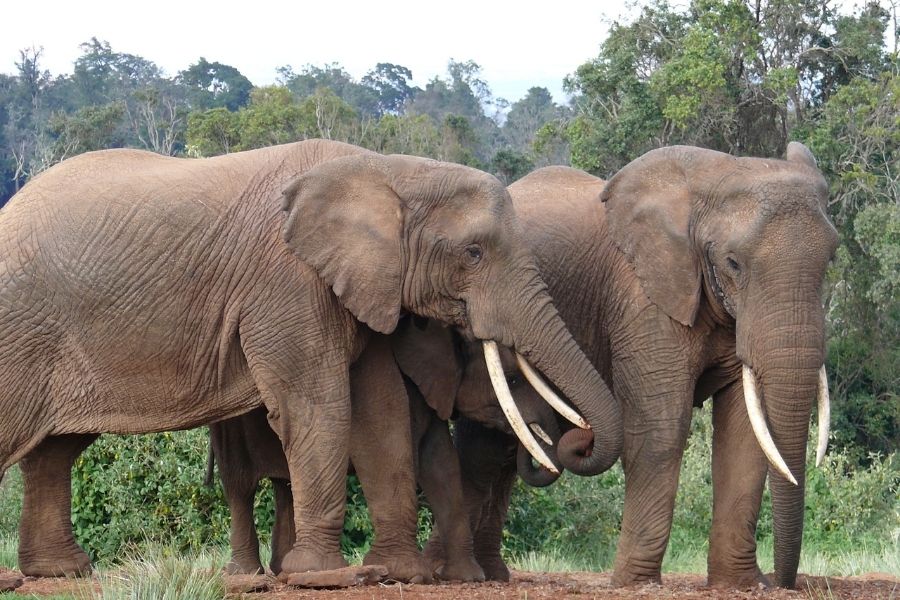
WHO ARE THE BIG FIVE ANYWAY?
The title holders are the Elephant, the Rhino, The Buffalo, the Lion, and the Leopard, so called because they were the preferred shooting targets for the Erstwhile "Great white hunters," the romantic heroes of the early days of the traditional 'safaris.
Nowadays, the only shots to be fired on Safari are on film, but that doesn't stop most visitors from developing an overwhelming urge to capture all the famous five videos or cross off the list in their guidebook.
As a result, binoculars in hand, cameras and primed eyes out on stalks, thousands of later days. Khaki-clad' hunters' scan the horizons, comb the grasslands, hunt through the thickets, and peer up into the trees in search of the uncontested superstars of the wildlife world.
The trouble is that in the countryside of Kenya, with celebrities as reclusive and cunning as this elusive quintet, what do you look for precisely?


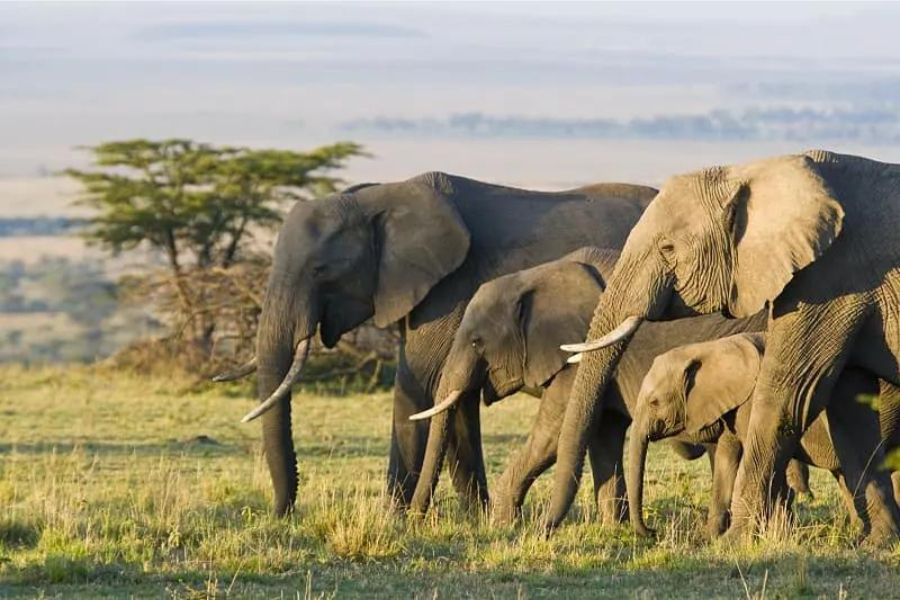
It's a bit of a problem, especially if you are trying to spot an elephant by looking for the large grey shape in Tsavo National Park, where the largest heard are reputed to be found. If so, you will sadly be disappointed because when you are in Tsavo, you need to look for a sizeable Pink shape.
Why so? This is because Tsavo elephants instead confusingly cover themselves with the local deep red iron-oxide soil to keep away the insects.
The truth is that the best and the most guaranteed 'Elephant spot' is to be found at the foot of Mt. Kilimanjaro in Amboseli National Park. Here, vast herds of Elephants dip themselves up to their stomachs in water and can be spotted feeding on the Amboseli Swamps lush green grasses.
Moreover, their grey-brown color stands out against the bright green grasses, making them absurdly easy to spot. Also, because the researchers have been tracking them for the last 40 years, the Amboseli elephants are familiar with humans and relatively un-phased by close-up viewing!
Keep an eye on the prominent matriarch, who sometimes tends to be more protective of the family.
If you search for the big cats that are the subject of your Big Five wish list, head immediately to the Famous Masai Mara National Reserves, where the wide-open plains and the tree-lined rivers offer happy hunting grounds for lions and leopards.
The cool, shady thickets also provide ideal resting positions for the enormous pride that returns from hectic night's hunting, replete and tired. A good trick is to keep an eye open for a twitching ear or a sudden flash of creamy-white fur as a lioness lays lazily over and exposes her stomach to the sun! You might also see some cubs tumble out of the bush in a flurry of fur, paws, and claws, much too engrossed in their wrestling match to realize that their cover is blown.
When looking for the ever-elusive Leopard, watch out for the giveaway swinging tail; usually high up in a tree where, draped across a tree branch and camouflaged, the Leopard itself will be hidden; the long tail is, therefore, the only clue to his lounging presence.
A timid and solitary animal, the Leopard is seldom found in the company. Since each animal maintains an individual territory, the only viable way to search him out is often by seeking local advice or being led by your guide. Dawn and dusk are the best times, but keep an eye on that shadow at the bottom of the tree. It might just walk off into the long grass.
As for the highly endangered Rhino, these great, grey pre-historic creatures are best found in the thick, scrubby bush, particularly in the sanctuaries established to protect them. These include the Sanctuary in Tsavo East National Park, Nairobi National Park, Lake Nakuru National Park, and several private sanctuaries around Solio and Lewa Downs in Laikipia.
Large, Lumbering, and very short-sighted, this greyish-brown herbivore is surprisingly good at hiding in thickets, and it's often only given away by the mound of droppings, known as Rhino Midden, that he leaves behind. Look also for telltale movements as the Rhino stamps its feet or swishes its stubby tails against a branch.


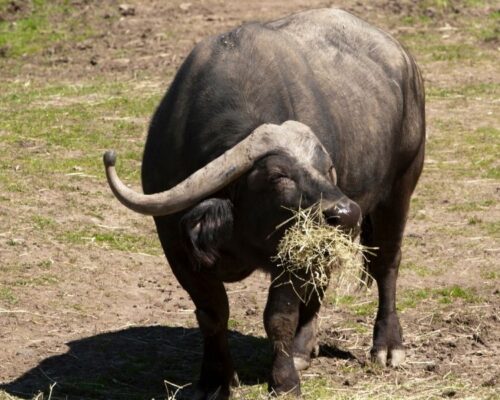
Of all the big five, the buffalo are the easiest to bag because huge herds roam the Mara, Tsavo, Laikipia, Amboseli, The Aberdares, and slopes of both Mt. Elgon and Mount Kenya. The best clues to their presence are the dark shadows that dot the hillsides and betray a herd of Buffalos on the move.
Be aware, though, because up-close buffalo herds can become decidedly skittish and often break into a lumbering run at the approach of a vehicle. Perhaps the best buffalo photo opportunity is that offered by a grumpy old male alone in a dense thicket from whence only a large yellow-brown eye gleams and a wet black nose protrudes.
Other significant spotting areas are along or in the swampy locations in Amboseli while they are resting and chewing the curd.
Buffalos are probably the most dangerous of all the Big Five!
Otherwise, if all else fails and the hunting hints have let you down, why not try the tiny lake Nakuru National Park or, Most probably, at the heart of the city, Nairobi National Park?
Lake Nakuru is famous for its pink flamingos alongside a Rhino sanctuary, with remarkable tree-climbing lions and a large leopard population.
Interestingly, you will likely get five out of five in Masai Mara with a 3-day, 2-night Masai Mara safari.
Happy Hunting!
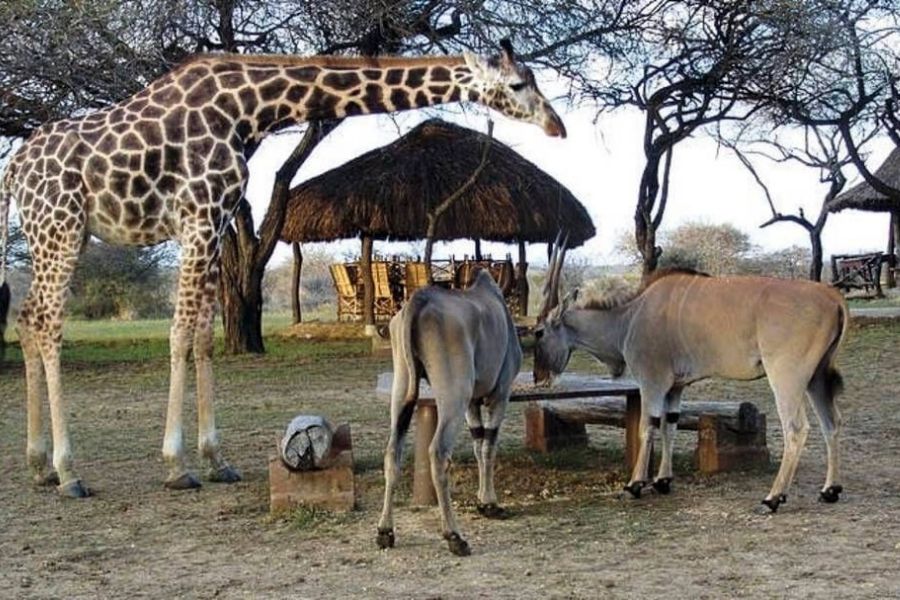
VISIT KENYA AND LET EVERYTHING ABOUT AFRICA ROLL.
Is your image of a Kenyan safari that of a whistle-stop beach and bush tour wedged into a mini-bus with a group of noisy strangers intent only on 'ticking off' the game from the list at the back of their guidebook? It's a slight exaggeration, but the picture often springs most readily to mind.
And with good reason, too, because 'packages' of this kind were once typical Kenyan tourist fare. There was nothing wrong with them either; they were affordable, did the job, and could be booked quickly and easily 'off the shelf' at your local tour agent. But times have changed. And today, travelers are looking for something slightly different. Something slightly more 'off the beaten track.'
No matter where your Safari takes you, it will be nearly impossible to match Kenya's rich culture and cuisine. Those who have traveled this route would agree that this side of Africa has electric energy, made even more apparent by its perfectly posed wildlife and fearless safari leaders.
How to Do a Kenyan Safari
Let me first pose this question to you. Do you know what brings most travelers to Africa?
I hope you are among the list of such travelers, whose apparent reason is Kenya's plethora of safaris promising front-row views to hair-raising wildlife.
Tell me this is your motivation to travel to Africa, and you're in luck!
Kenya and, Indeed, Eastern Africa is home to many reserves and national parks that strive to protect these species while providing a safe opportunity for foreigners to experience them up close and personal.
Many game parks in Africa give an option for self-driving. While this may appeal to locals and experienced tour guides, tourists will likely enjoy exploring these zones more by embarking on a guided tour with trained professionals who know the landscape and have studied the animals' patterns.
It is arguably the best route to choose a typical land-led safari in a four-wheel drive, open-sided vehicle. An experienced guide will navigate this new environment so that your only worry is whether you remember to pack the correct camera lens.
Choosing this approach to a safari will allow you to keep your eyes peeled for the eccentric wildlife you don't usually see daily. On an extended safari tour like our trips offer, in which several days will be spent engaging in game viewing, the guides will have previously handpicked the best destinations and viewing times for unearthing Eastern Africa's marvels.
Kenya has some of the finest game parks in the world, home to some of her last great tropical forests, excels in flora, offers unrivaled marine discoveries, has over 1,000 species of birds, and offers historical wonders that range from the very cradle of humanity to the ancient- sea-going dhows with a treasure trove of forts, pillars, and tombs in between.
A few locations where you'll spot this wildlife during your game drives include Masai Mara National Reserve, Serengeti National Park, Amboseli National Park, and more. Keep your eyes peeled for rhinos, lions, elephants, buffalo, and leopards.
Before you leave, conquer your fear of heights by signing up for a sunrise balloon safari. You can spot these majestic creatures from a new angle above the vast landscape. If this isn't convincing enough, you'll receive a champagne breakfast upon your safe landing.
What's more, if you can plan with a local agent, you are flexible – less likely to stick to the rigidly prescribed tourist 'hotspots. You will be more able to strike out on the road less traveled, to stay in a unique accommodation, to travel via a choice of alternative means, and to discover for yourself the rich tapestry of the local heritage that lies along the way.
Nor is it essential to pre-book everything, although to pre-book is better; you do not have to despair if you don't. As for the options, they are as endless as the vistas.
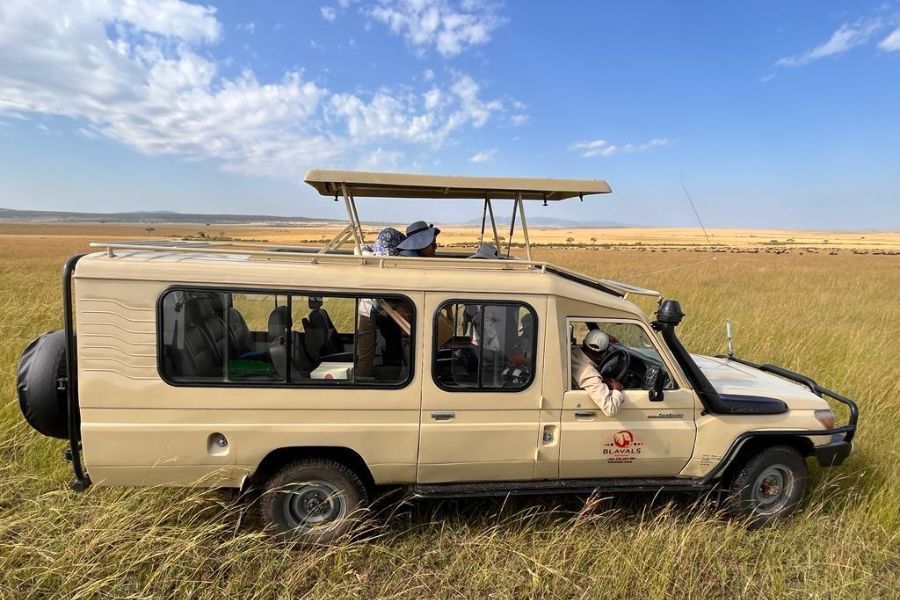
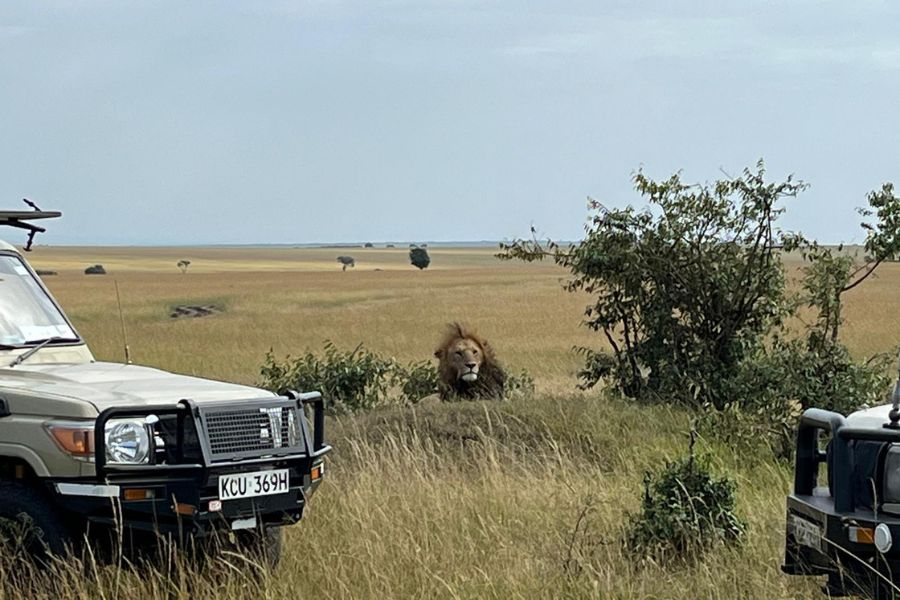

Where to Go On a Safari in Kenya
Upon finalization of your tour plan with the travel agent, you will realize that what is in store for you is a combination of wild bush safaris, trekking safaris, and beach safaris. During your game drive through Lake Nakuru National Park, you will encounter countless bird species, black and white rhinos, and other diverse mammals; this national wonder speaks to the incredible range of African scenery.
Driving southwest of Lake Nakuru National Park, you arrive in Maasai Mara National Reserve, a preserved savanna bordering Tanzania. A safari in this reserve will expose you to the sights you may typically picture when imagining this type of adventure.
During the numerous game drives through dotted trees and savannah grass under the sun's scorch, expect zebras, elephants, hippos, lions, and cheetahs traversing through these wide-open spaces alongside your open-air vehicle.
Now, luck may have you sighted all the Big 5. But, you'd be more tempted by the pitch of your guide about the Amboseli Elephants - which will raise your curiosity to Head Now to Amboseli National Par.
Here, you'll commence a safari, primarily passing by packs of majestic elephants and other safari animals. Aside from the guaranteed elephant sightings, however, locals and tourists alike are stunned by the views of Mount Kilimanjaro and its snowy peak in the distance.
Noted as the home of the African elephant, Amboseli National Park does not skim on splendor. Because of these massive attractions, the park has become one of Kenya's premier safari and wildlife viewing destinations.
One more additional option is a hot air balloon safari, which is offered in select parks. These sunrise escapades provide a birds-eye view of the landscape and the animals' morning habits. It is an excellent add-on to one's safari experience, as sightseers can observe a new perspective of the plains and celebrate their landing with a champagne breakfast.
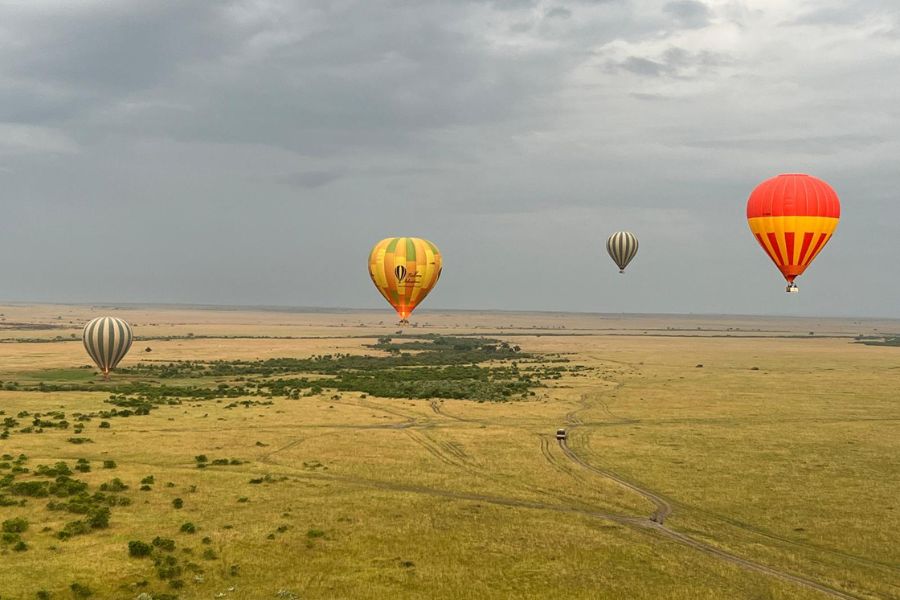
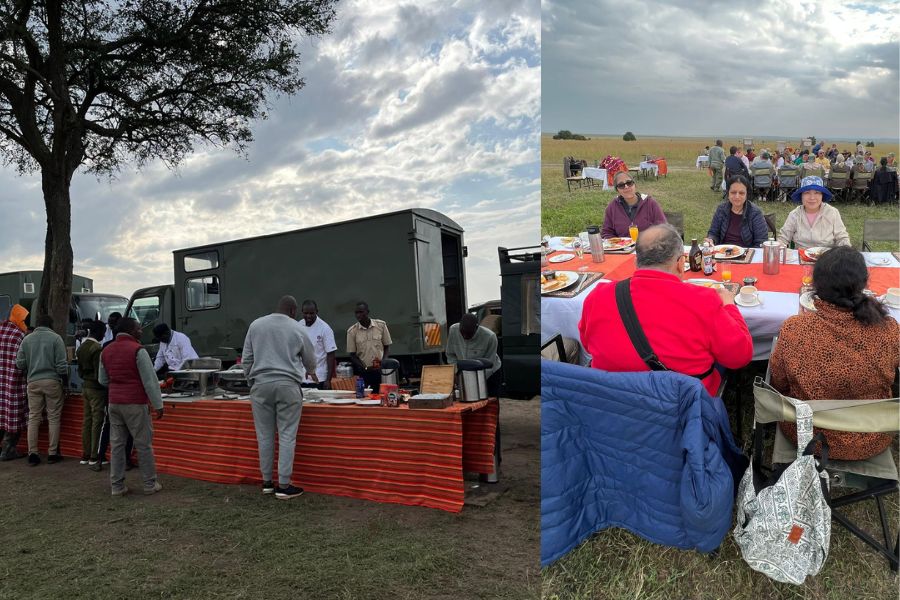
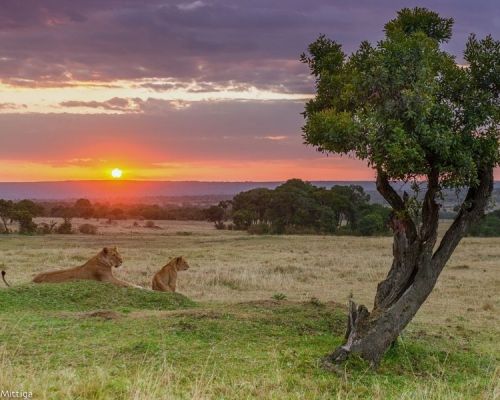
How We Do It.
We tailor adventure safaris to suit all tastes, from camel to bikes, photography art, and from child-friendly to honeymoon romantic.
With vast options and viewpoints to tour travel and adventure, we've taken an entirely new tourism direction; not only do we believe in eco-tourism, but we are firm in the practice of eco-friendly pursuits.
We are also committed to building community-related projects that benefit the local population, the indigenous wildlife, and the Natural Biosphere, such as the Tasia lodge in Kenya's Northern Laikipia district, built entirely from local materials on a community-owned ranch run solely by and for the members of the community.
Would You Trust Your Agent?
Finally, how do you know if you can trust your overseas travel agent?
EASY.
Most reputable agents belong to such world-recognized agencies such as the International Air Transport Association (IATA), The Kenya Association of Tour Guide Operators (KATO), and or The Kenya Association Of Travel Agents (KATA) or can be checked out through essential inquiry to Kenya's Travel Regulation Authority (TRA).
Once you identify the agent to work with, the rest becomes easy. While you may not be able to pop in and talk face-to-face with your Kenya travel Advisor, with online options like Email, WhatsApp, and the Internet - you can complete your booking.
We hope this information has been helpful, and as you plan to visit Kenya for an ecstatic adventurous safari, Blavals Adventure will be your preferred choice.

Wildlife in Kenya is not confined to the parks and reserves alone, though it is generally more abundant in such areas. Although safaris tend to be routed through the reserves, you will often see plenty of wildlife outside.
On an arranged safari, you should have little difficulty recording between 30 to 40 species of mammals and at least 150 bird species. From the reptile family, you will likely see crocodiles and several large and small lizards, but you will have to search hard to find a snake despite having a whopping 169 venomous snakes recorded in East Africa.
Much of the land in Game reserves is a savannah, rich in pasture shaded with trees; the antelope herds are mainly found here. A remarkable harmony where several species can graze in the same land, each eating different grasses and herbs, and no one species is so numerous to interfere with the domain of others.
Antelopes are notably large and small; the largest – the Eland – weighs around 600 kg, a hundred times the weight of the dainty dik-dik.


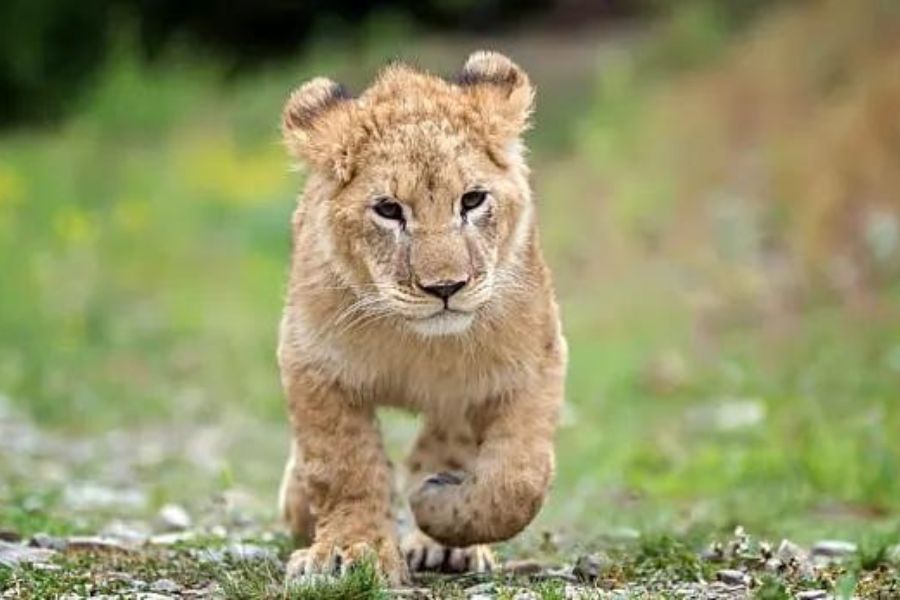
Wildebeest, which is among the most numerous of antelopes, share their grazing with Zebra and are naturally gregarious, but the smaller antelopes, such as the Suni, oribi, and Duiker, are rarely found in significant numbers; indeed, they are almost always solitary or in Pairs.
These antelopes commonly inhibit patches of thick cover found in the Savannah, and some of them, like the Duiker, have evolved with shorter forelimbs, making their dive for cover easier. Duiker means Diver in Afrikaans.
Where there are antelopes, there are also carnivores – Lions, leopards, cheetahs, wild dogs, and hyenas. The latter, as much a hunter in his own right, is more familiar with the tag of a scavenger. Lion and Leopard are rarely found making a killing in daylight; however, not so for the cheetah, which needs to be able to see to use its principal weapon – speed.
As a visitor, you will also see a range of smaller carnivores – the serval cat, genet, and the jackals. Jackals are also predators, particularly the beautiful golden-backed (or oriental) species, which, again centrally to popular concept, rarely scavenges. Even the most common jackal, the black-backed, finds only one-third of its food from scavenging.
But of the predators, the average visitors first seek out the lion. But I can promise you that you will likely not be disappointed because the lions are common in most parks and reserves but nowhere more numerous nor splendid than in Masai Mara. Lions spend much of the day sleeping or dozing, becoming alert in the early evening, especially when feeding is needed.
Lions are remarkably catholic in their tastes. As a whole pride, they kill antelope and Zebra, but warthog, baboon, ostrich, and jackals are killed and eaten when hunting alone. A lion eats about 20-25kg at a meal, sometimes more.
Elephants range across a broad spectrum of habitats from the hot coastlands to the Aberdares & Mt. Kenya cold moorlands at 3600M. Very few other animals have this range. Elephants are found in most of the parks. However, herds of 100 or more can be found in Meru, Amboseli, and sometimes in Samburu. Despite their great size, elephants are particular when left alone.
The need to maintain its vast bulk (some 150 – 200 kg of forage daily) keeps an elephant on the move and constantly active – even at night, the constant search for food continues. It is this restlessness that makes elephant watch more rewarding.
The wanton destruction of the Rhino throughout Arica has severely reduced the Rhino population to the point where it has become necessary to relocate most of the remaining few into safe sanctuaries.
Nairobi National Park, Lake Nakuru National Park, and Tsavo National Parks (East & West) hold many Rhinos. However, it is still possible to find Rhino that has not been translocated in the Masai Mara and the Aberdares and Mount Kenya forests. Few visitors leave Kenya without sight of these shambling, unpredictable monsters. The best time to see them is in the early morning, for they return to the thick bush in the heat of the day as their heat absorption capacity is poor.
Giraffes roam the Savannah with little competition for the tender leaves of the Acacia trees, their principal food. The reticulated species, found north of the Equator, must be one of Kenya's most striking animals. The lakes, swamps, rivers, and riverine forest support their specialized wildlife.
Hippos, of course, irritable and fussy, share their habitat with the little-loved crocodiles. The largest crocodile concentration is in Lake Turkana and at Sibiloi Park. The numbers are exceptionally great, with as many as 50 – 60 crocodiles per kilometer of beach. Crocodiles feed primarily on fish, of which our rivers and lakes hold considerable variety.
The Nile perch found in Lake Victoria and Turkana is the most notable species reaching enormous proportions - 50 kg specimens are quite common.
The cape (or African) buffalo, judged by most hunters to be the most dangerous of the big game, inhabits grassland where there is preferably thick cover and swamp in which it lies up. Still, like the elephant, it is also adapted to life in dense and cold forests. Yet ferocity is not the mark of buffalo in groups. Their herds, which can be numbered in many hundreds, are pretty timid.
Hippos, irritable and fussy, share their habitat with the little-loved crocodiles. The largest concentration of crocodiles anywhere is in Lake Turkana and Sibiloi Park. The numbers are exceptionally great, with as many as 50 – 60 crocodiles per kilometer of beach.
Crocodiles feed primarily on fish, of which our rivers and lakes hold considerable variety. The Nile perch found in Lake Victoria and Turkana is the most notable species reaching enormous proportions - 50 kg specimens are quite common.
This is not the place to describe wildlife's wealth in detail. Suffice to glimpse this outstanding pageant in anticipation of a visit. The significant parks (Tsavo, Amboseli, Masai Mara, Samburu, and Meru) all feature not less than 50 species. Still, there are other areas, such as Maralal and the Tana River primate reserve, where there are as many species but less abundance.


